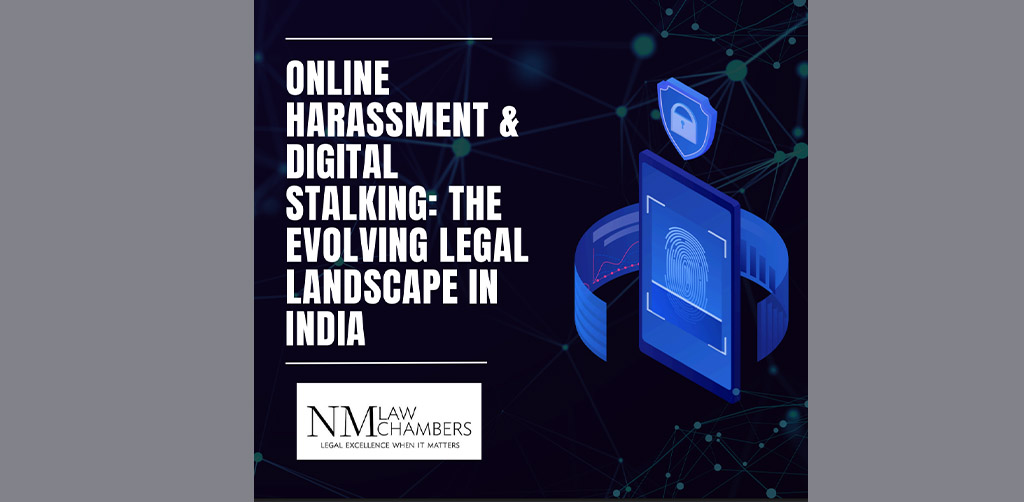THE DIGITAL AGE AND ITS DARK SIDE
The internet has transformed the way we connect, communicate, and share information. However, this digital revolution has also opened avenues for malicious activities such as cyberstalking, online harassment, and digital abuse. Perpetrators exploit technology to intimidate, threaten, and violate individuals’ privacy, inflicting psychological distress, reputational harm, and financial loss.
Indian courts are increasingly recognizing the gravity of such offenses. By expanding legal interpretations and strengthening enforcement mechanisms, the judiciary is adapting to tackle the surge in cybercrimes. As digital threats escalate, the question arises: How effectively do Indian laws address these evolving challenges?
LEGAL FRAMEWORK IN INDIA
India has fortified its cyber laws to safeguard citizens from online threats. Key legal provisions include:
- Information Technology (IT) Act, 2000 : Covers offenses such as identity theft, impersonation, hacking, and publication of obscene content online.
- Bharatiya Nyaya Sanhita (BNS), 2023:
– Section 93 – Addresses criminal intimidation, including online threats.
– Section 129 – Penalizes the harassment of women in digital spaces.
– Section 354 –Criminalizes cyberstalking and voyeurism. - POSH Act, 2013–Encompasses online sexual harassment in workplaces.
Courts have also mandated that social media platforms act swiftly by removing offensive content within 24 hours of reporting to protect users from continued harm.
CYBERSTALKING – AN EMERGING THREAT
Cyberstalking refers to persistent and intrusive online behavior involving harassment, threats, or unwanted monitoring. Victims often endure anxiety, reputational damage, and heightened security risks.
Landmark Case: State of Tamil Nadu v. Suhas Katti (2004) – India’s first cyberstalking conviction under the IT Act. The accused faced criminal charges for sending obscene messages online, establishing a crucial legal precedent that underscored the seriousness of digital stalking.
COURTS & DIGITAL EVIDENCE
Indian courts have adapted to technological advancements, now recognizing emails, social media records, IP logs, and other digital footprints as admissible evidence in legal proceedings.
Notable Case: Shreya Singhal v. Union of India (2015) – The Supreme Court struck down Section 66A of the IT Act, which had been misused to suppress free speech. This landmark ruling emphasized the need for robust yet balanced cybercrime laws. Courts now actively promote the use of cyber forensic techniques to expedite investigations and ensure effective justice in digital harassment cases.
RATE AT WHICH CYBER CRIME GROWING IN INDIA
Daily Complaints: In May 2024, the Indian Cyber Crime Coordination Centre (I4C) reported an average of 7,000 cybercrime complaints per day, marking a 113.7% increase from 2021–2023 and a 60.9% rise from 2022–2023.
Financial Losses: Between January and April 2024, Indians lost over ₹1,750 crore to cyber fraud, with significant losses attributed to investment scams, trading scams, and digital arrests.
Annual Losses: In the first nine months of 2024, reported losses due to cyber fraud reached ₹11,333 crore, with stock trading scams accounting for ₹4,636 crore and investment-related scams resulting in ₹3,216 crore in losses.
High-Value Fraud Cases: The number of cyber fraud cases involving amounts exceeding ₹1 lakh surged over four-fold in the fiscal year 2024, causing losses of $20 million.
These statistics underscore the escalating threat of cybercrime in India, highlighting the urgent need for robust legal frameworks and proactive measures to protect individuals and organizations.
LEGAL REMEDIES FOR VICTIMS
Victims of online harassment in India can seek redress through the following steps:
- File an FIR under relevant provisions of the IT Act and BNS.
- Approach dedicated Cyber Crime Cells available nationwide.
- Request restraining orders or injunctions from courts to prevent further harassment.
- Report abuse via the National Cyber Crime Reporting Portal for swift action.
Additionally, courts have directed social media platforms to enhance content moderation policies, ensuring harmful content is identified and removed promptly.
THE FUTURE OF CYBER LAW IN INDIA
As digital threats like deepfakes, AI-driven fraud, and identity theft grow more sophisticated, India’s legal framework is evolving to stay ahead:
- The Personal Data Protection Act, 2023 aims to strengthen online privacy and curb cyber exploitation.
- Proposed amendments to the IT Act include stricter penalties for cyberstalking and harassment.
- Courts are actively pushing for greater accountability from digital platforms and improved law enforcement training for effective response to cybercrime.
While the legal system continues to adapt, fostering public awareness and ensuring stringent enforcement are crucial to creating a safer digital environment for all citizens.
Stay tuned for more legal insights!

